This document provides an overview of Linux memory management concepts including:
- RAM usage and primary vs secondary memory
- Memory mapping, process address spaces, and segmentation
- Pages, frames, page tables, and virtual memory
- Memory nodes, zones, and NUMA concepts
- Kernel memory allocation, page faults, and troubleshooting memory issues
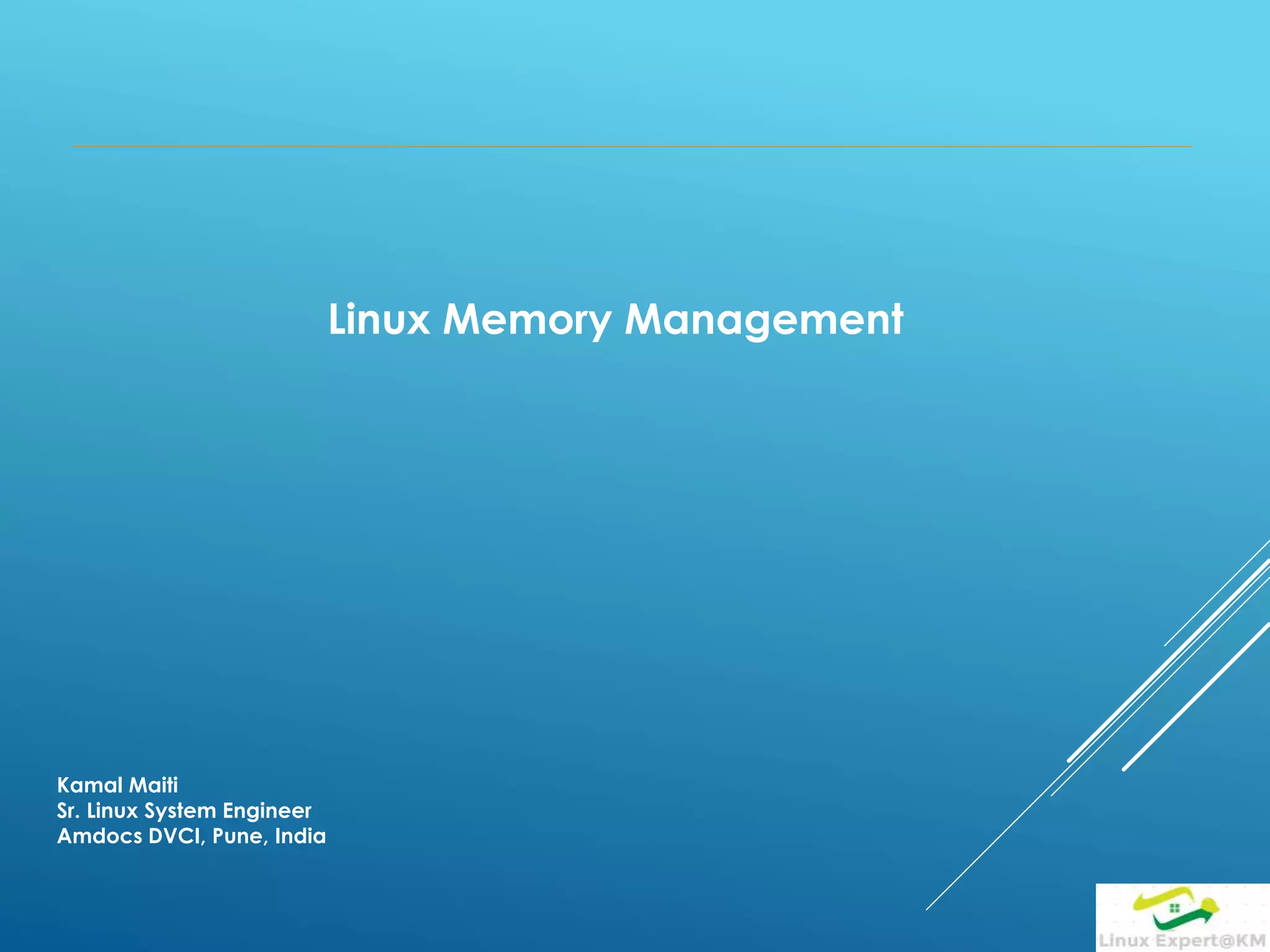
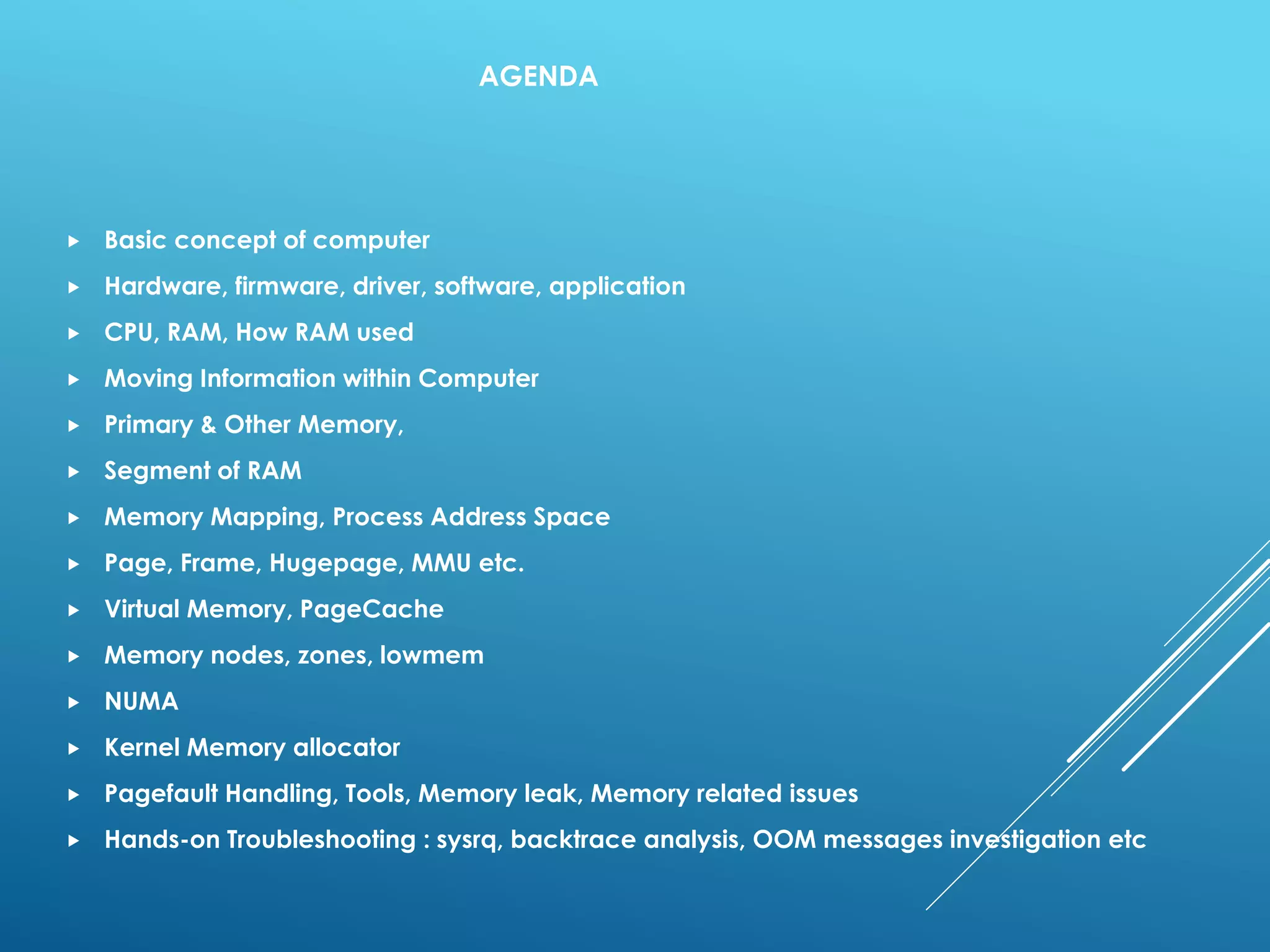
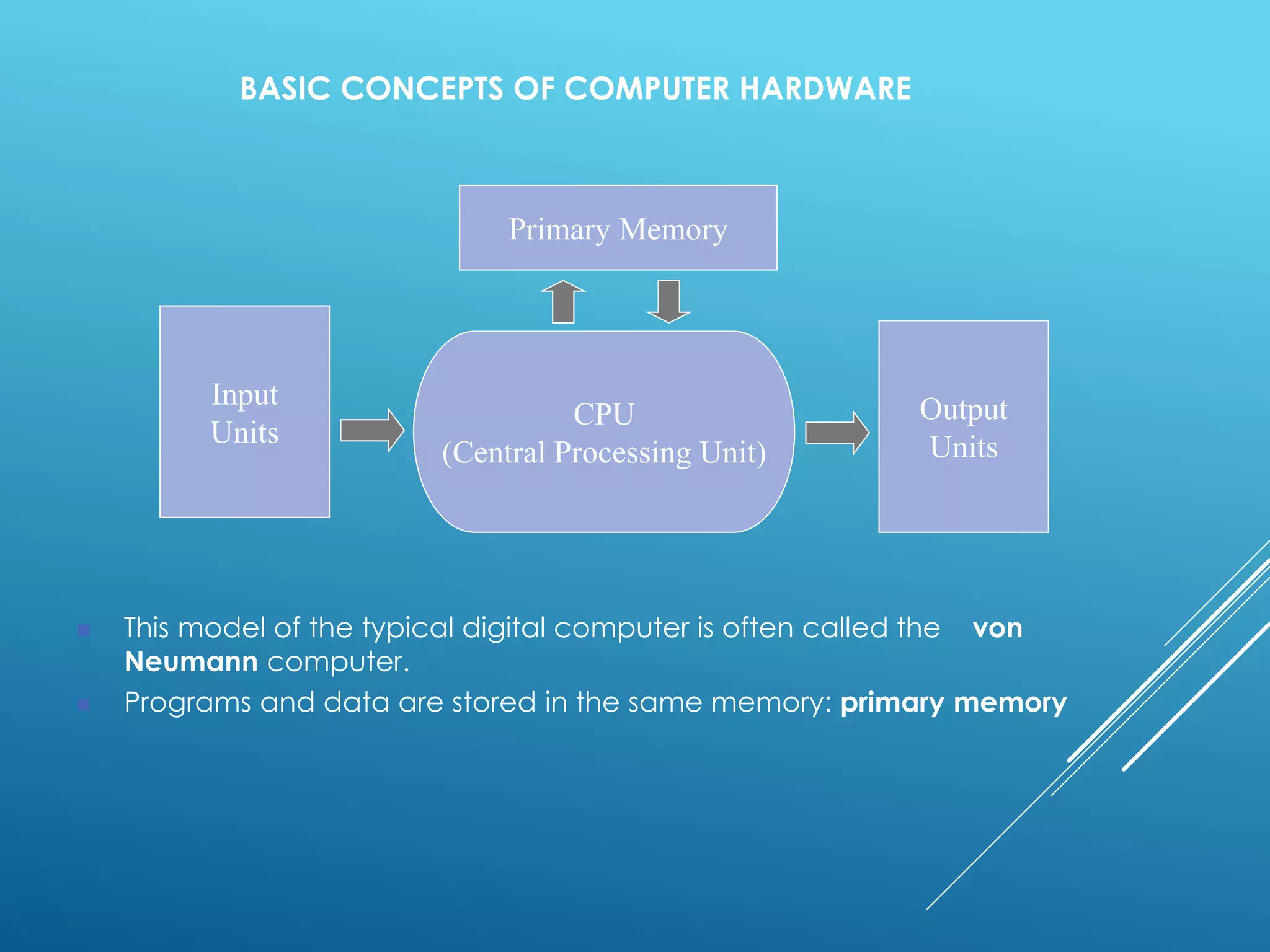
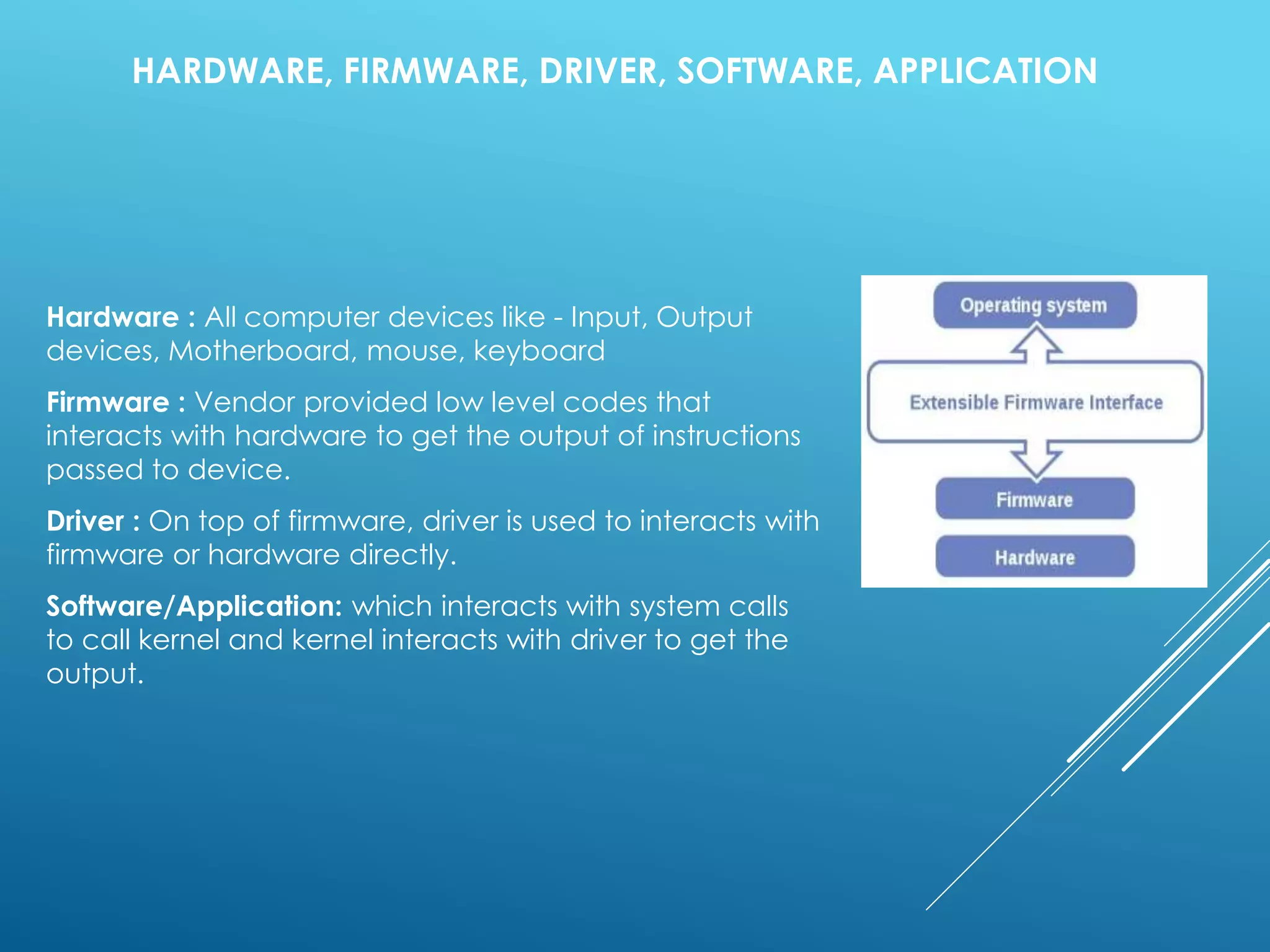
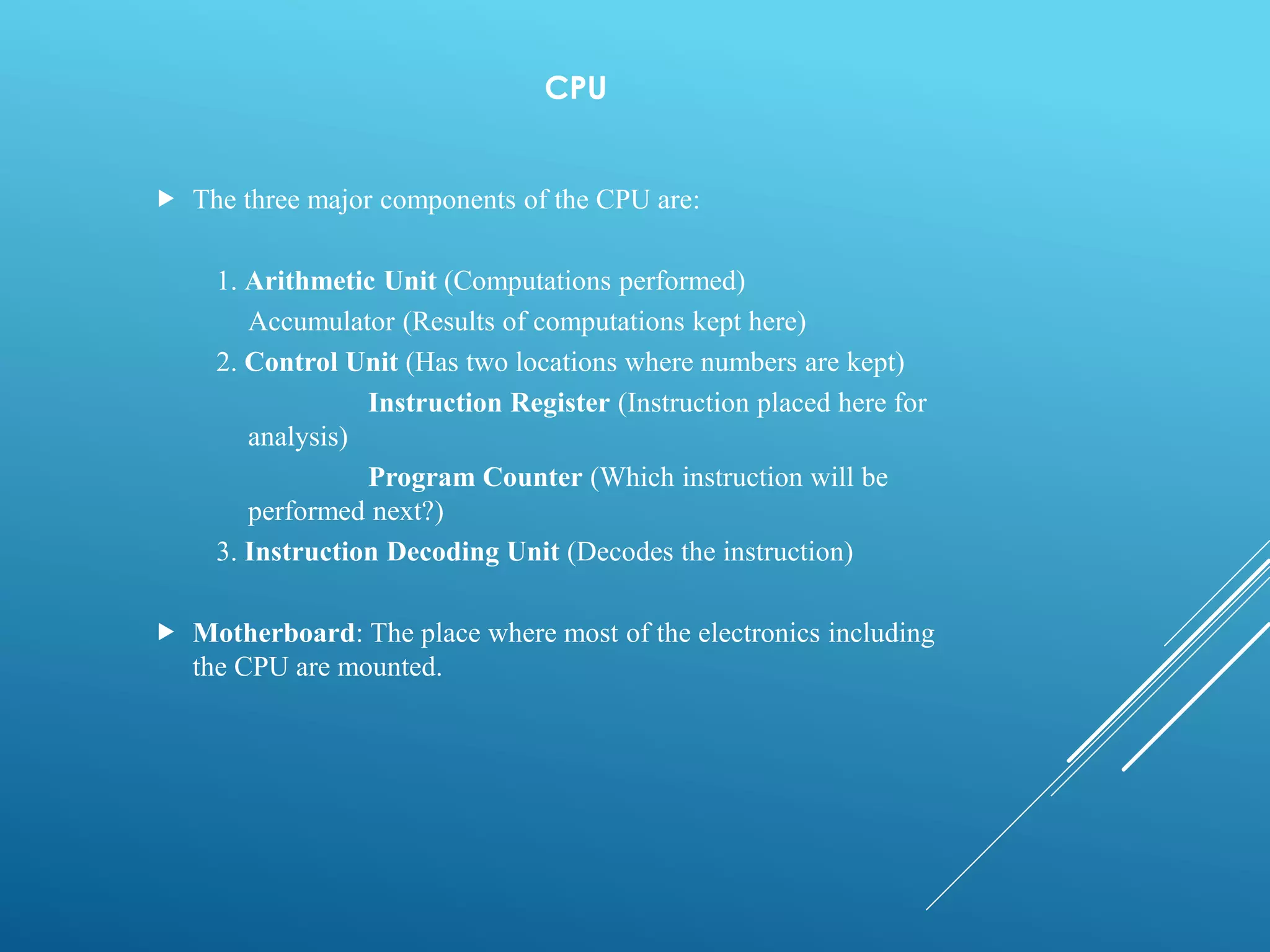
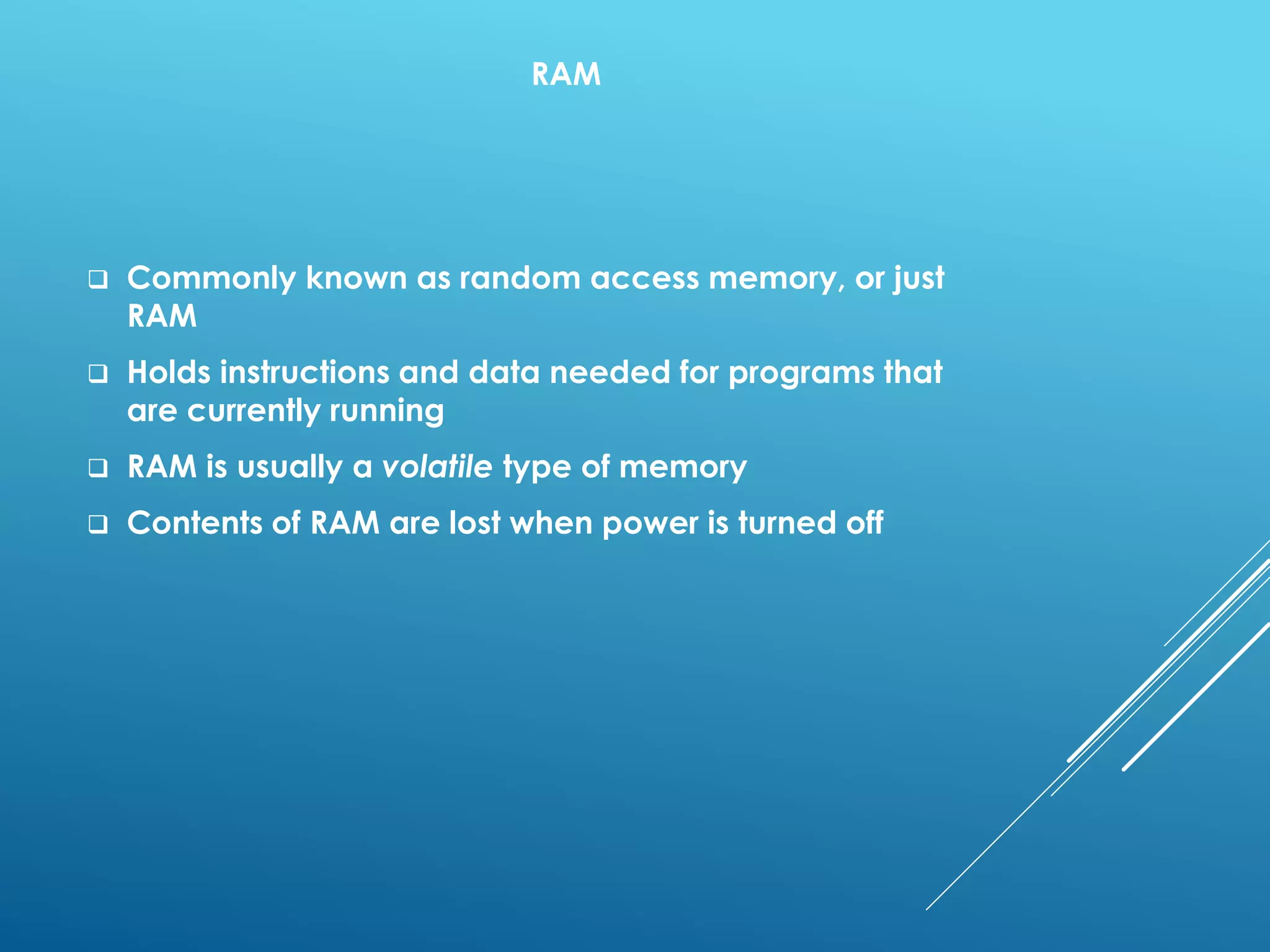


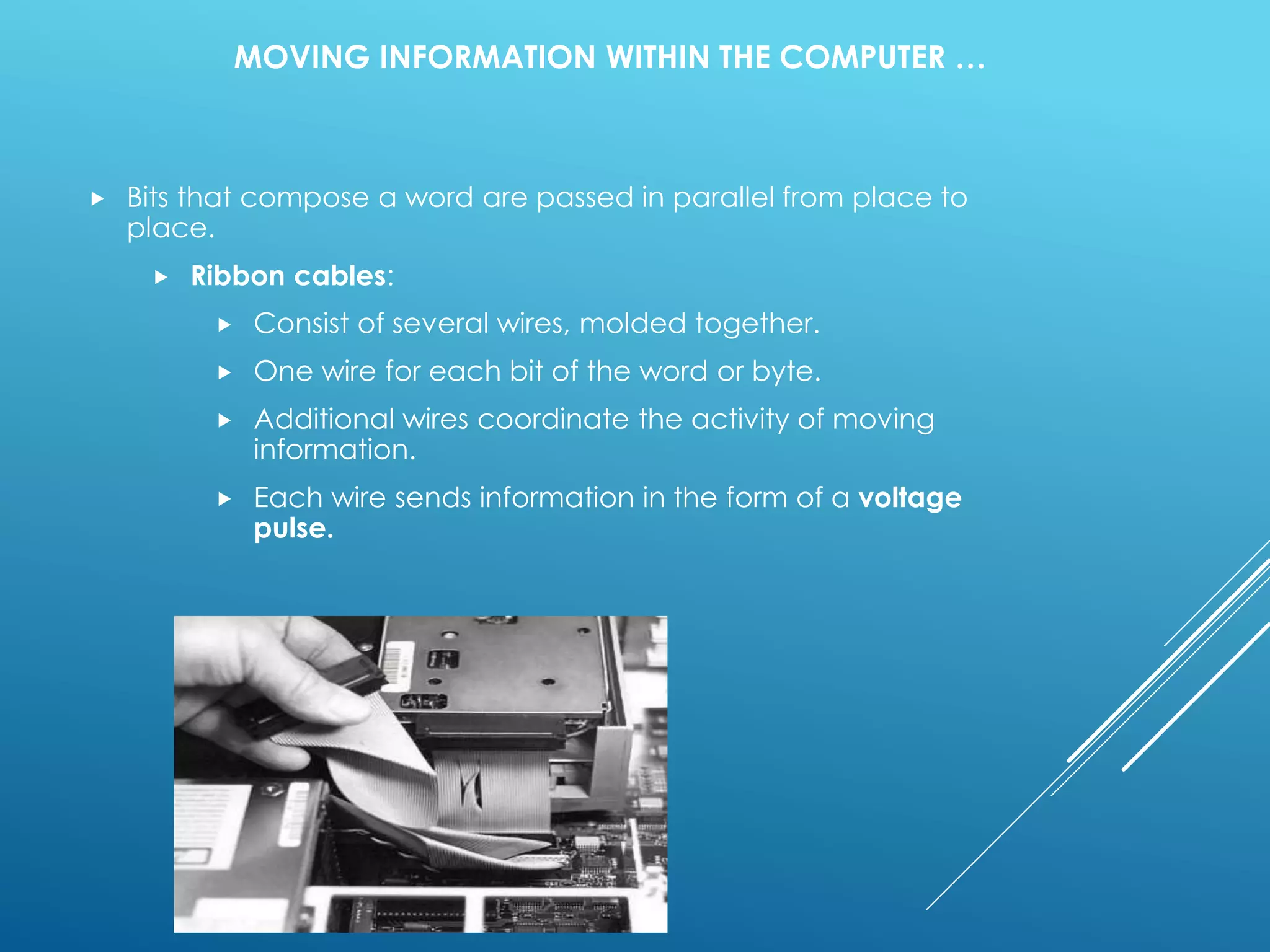
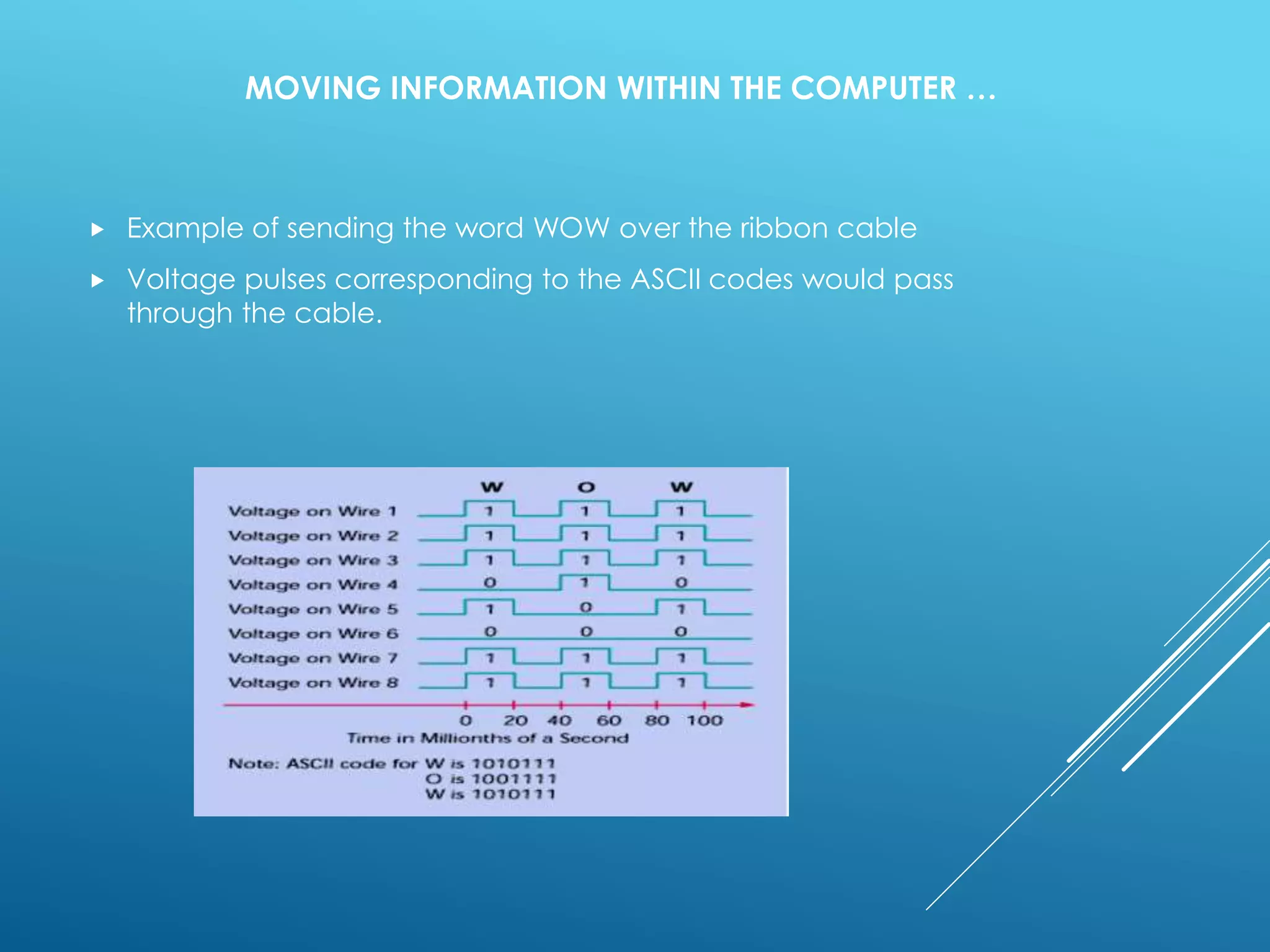
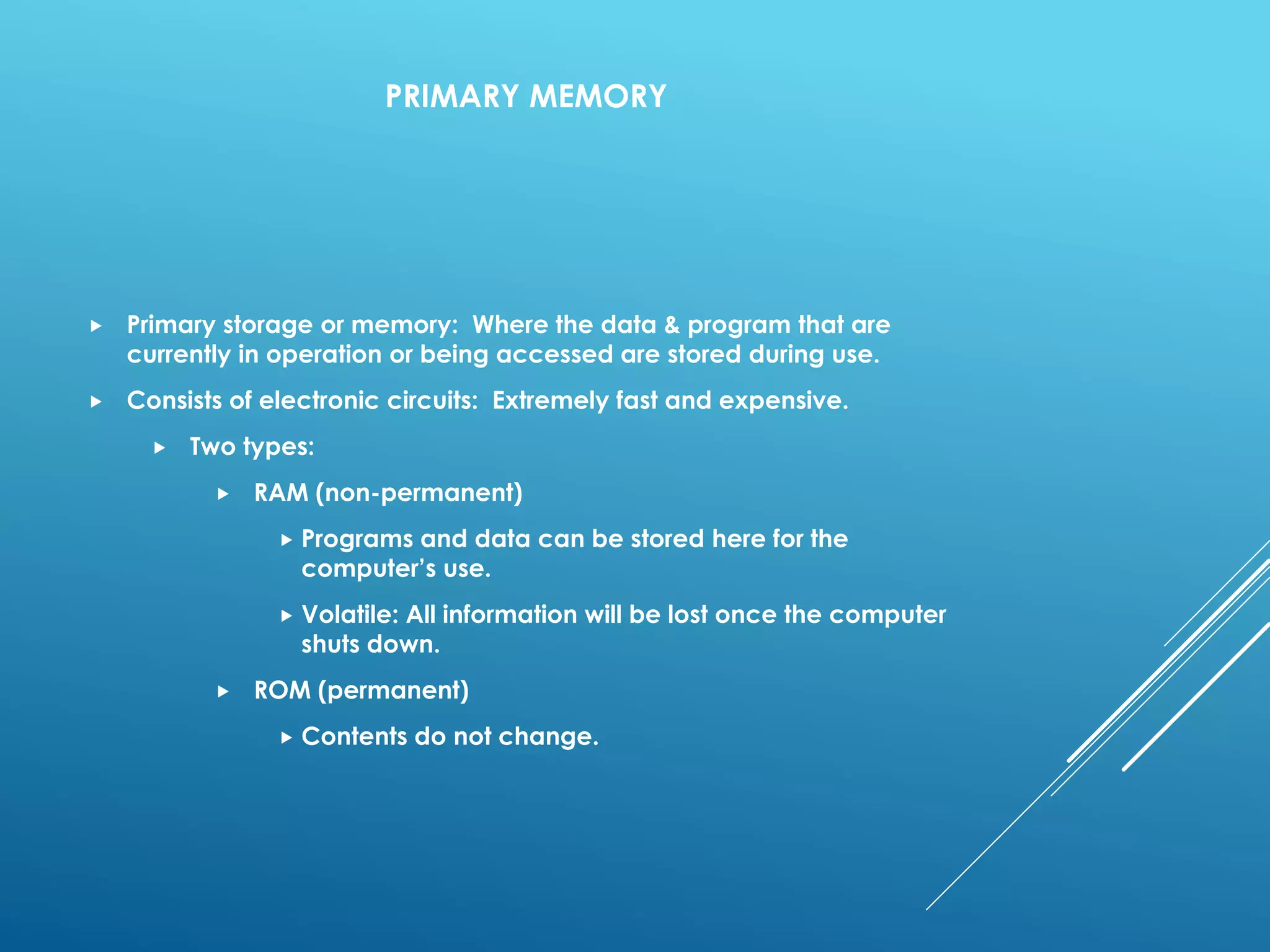
![ ROM : a transistor [storing video game software, electronic musical
instruments]. ROM is mostly used for firmware updates.
EROM : Erasable programmable read-only memory
EEPROM :Electrically Erasable Programmable Read-Only Memory
Cache : Location in RAM where data is stored for a certain amount of time of
that it can be reused.
Registers : various flip flop register[RS, D, JK, shift etc] holds information
Swap : External disk is used to accommodate the demand of more RAM.
OTHER MEMORY](https://image.slidesharecdn.com/linux-memory-management-kamal-150804185545-lva1-app6891/75/Linux-memory-management-kamal-12-2048.jpg)
![SEGMENT OF RAM
Low mem, high mem, Normal mem, DMA, DMA32
On a 32-bit architecture[DMA, Normal & HighMem] : the
address space range for addressing RAM is:
0x00000000 - 0xffffffff or 4'294'967'295 (4 GB).
The user space range: 0x00000000 - 0xbfffffff or 3 GB
The kernel space range: 0xc0000000 - 0xffffffff or 1 GB
Linux splits the 1GB kernel space into 2 pieces: LOWMEM and HIGHMEM.
On 64 bit machine[DMA, DMA32 & Normal] : Normal
memory available beyond 4 GB](https://image.slidesharecdn.com/linux-memory-management-kamal-150804185545-lva1-app6891/75/Linux-memory-management-kamal-13-2048.jpg)
![MEMORY MAPPING
Linux uses only 4 segments in 32 bit arch:
2 segments (code and data/stack) for KERNEL SPACE from [0xC000 0000] (3 GB) to [0xFFFF FFFF] (4 GB)
2 segments (code and data/stack) for USER SPACE from [0] (0 GB) to [0xBFFF FFFF] (3 GB)
See virtual Map : $ pmap <PID> , see stack : $pstack <PID>
Segmentation, Paging [To overcome flaw in segmentation] –
allocating virtual small pages to each process so that they will be fit in RAM with out wasting it.](https://image.slidesharecdn.com/linux-memory-management-kamal-150804185545-lva1-app6891/75/Linux-memory-management-kamal-14-2048.jpg)
![PROCESS ADDRESS SPACE – 31 BIT ARCH
Kernel
0xC0000000
File name, Environment
Arguments
Stack
Bss[Block started by Symbol]
_end
_bss_start
Data
_edata
_etext Text/code
Header
0x84000000
Shared Libs
Text/Code Segment: contains the actual
code
Data: contains global variables
BSS: contains uninitialized global variables
Heap: dynamic memory
Stack: collection of frames/functions
Heap
Unused Memory
4 GB -->
3 GB -->
0 GB -->
Kernel Space
User Space](https://image.slidesharecdn.com/linux-memory-management-kamal-150804185545-lva1-app6891/75/Linux-memory-management-kamal-15-2048.jpg)
![PAGE & FRAME
Paging, Demand Paging, Swapping
Page Tables [64 bit 4, 32 bit 2]: Page Global Directory, Page Upper Directory,
Page Middle Directory, Page
Min page size : getconf -a|grep -i page
Life cycle of page: active----> inactive list --> dirty --> clean](https://image.slidesharecdn.com/linux-memory-management-kamal-150804185545-lva1-app6891/75/Linux-memory-management-kamal-16-2048.jpg)
![SWAP, HUGE PAGE, MMU,TLB
SWAP : All pages can’t be fit in RAM, need to call/send data from and to storage
disk
Hugepage : default page is 4MB but large program uses chunks of memory area.
Hence, allow large page. [sysctl -a|grep -i huge]
MMU/TLB : Responsible for translating logical address to physical address. TLB is buffer
that is used by MMU.
Active/Inactive regions [cat /proc/meminfo]
Shmem : shared memory area[ipcs -m]
Buddyinfo : view memory fragmentation/ allocation[cat /proc/buddyinfo]
Cache : For speeding up, sync to flush out and forcefully write on disk, bdflush does
at background [flush-253:0 in rhel 6]
buffer's policy is first-in, first-out
cache's policy is Least Recently Used[LRU] [$ vmstat -S M 1]](https://image.slidesharecdn.com/linux-memory-management-kamal-150804185545-lva1-app6891/75/Linux-memory-management-kamal-17-2048.jpg)
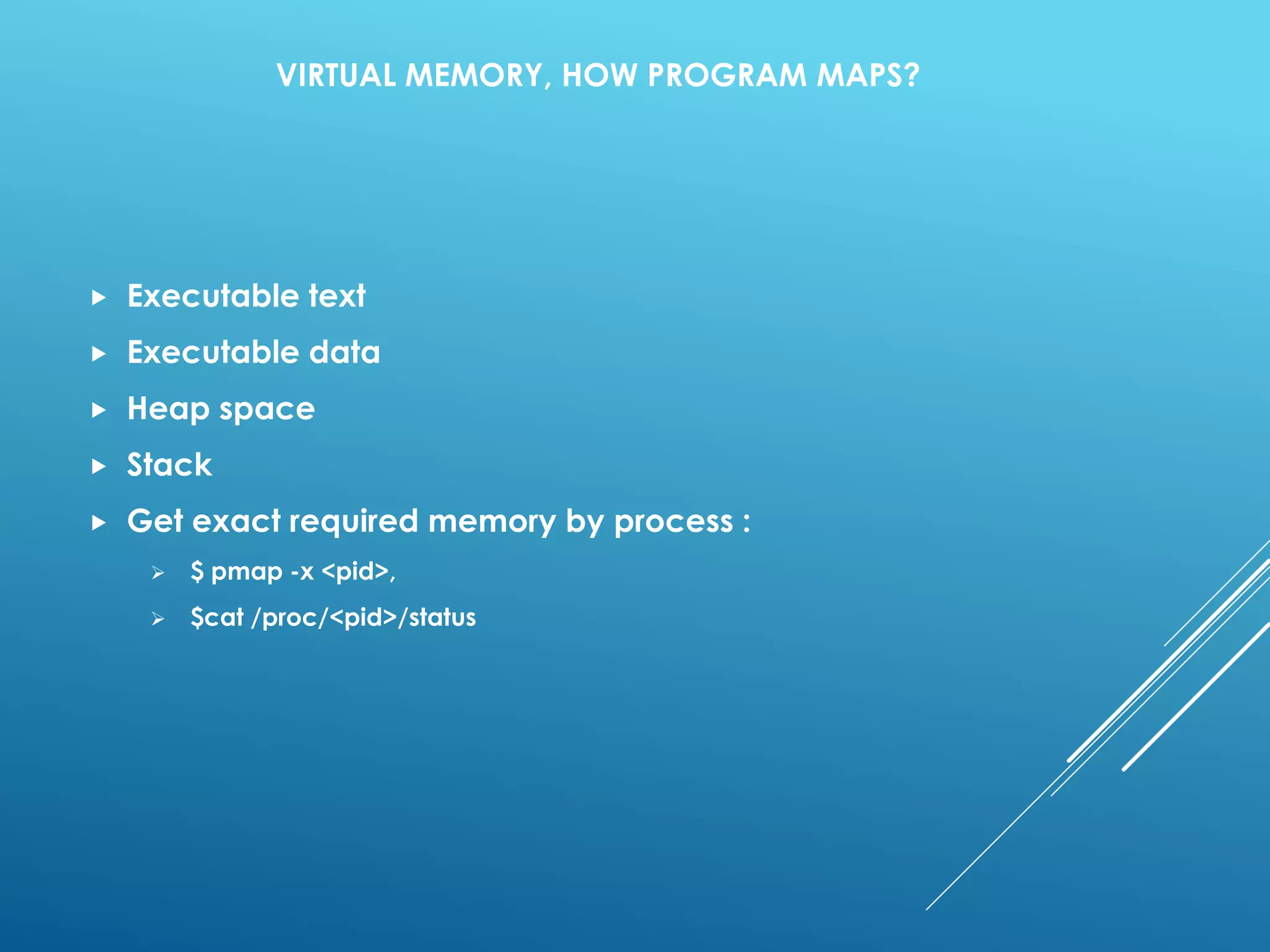
![PAGE CACHE MEMORY CONTROL
vm.dirty_expire_centisecs=2000
vm.dirty_writeback_centisecs=400 //how long they’ll wait
vm.dirty_background_ratio=5 // when percentage of total RAM filled, pdflush/flush daemon will
start write dirty data on disk
vm.dirty_ratio=20 //when percentage of total RAM filled, process will start write data on disk
vfs_cache_pressure [100] : controls the tendency of the kernel to reclaim the memory which is
used for caching of directory and inode objects
Swappiness[60] : controls how kernel will use swap space.
To free pagecache:
To free pagecache: echo 1 > /proc/sys/vm/drop_caches
To free dentries and inodes : echo 2 > /proc/sys/vm/drop_caches
To free pagecache, dentries and inodes: echo 3 > /proc/sys/vm/drop_caches
cache writes done by : kernel thread pdflush/bdflush, now in rhel 6 it is flush.
Life cycle of pages :
active---->inactive list -->dirty > clean
Link : https://www.kernel.org/doc/Documentation/sysctl/vm.txt](https://image.slidesharecdn.com/linux-memory-management-kamal-150804185545-lva1-app6891/75/Linux-memory-management-kamal-19-2048.jpg)
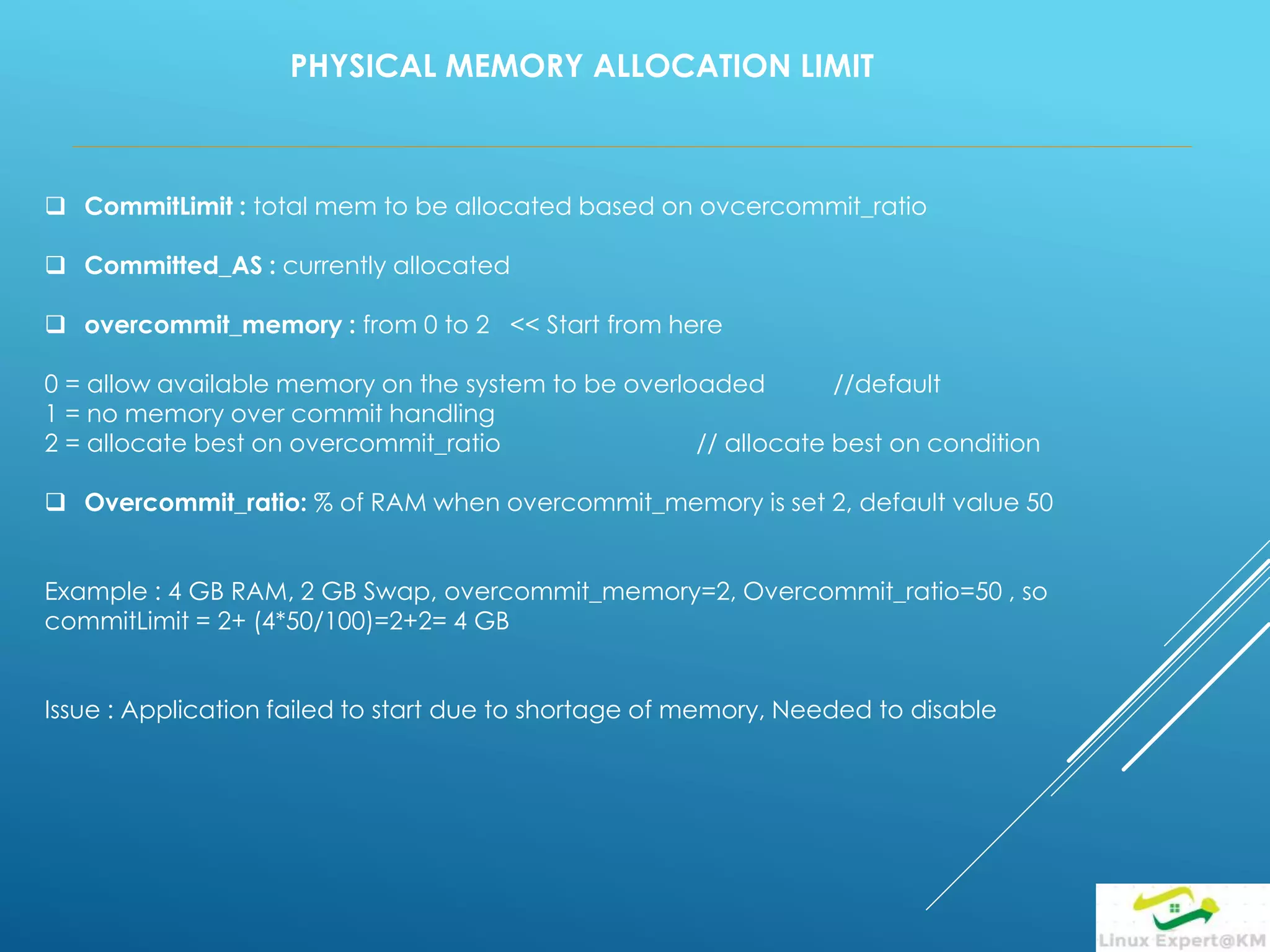
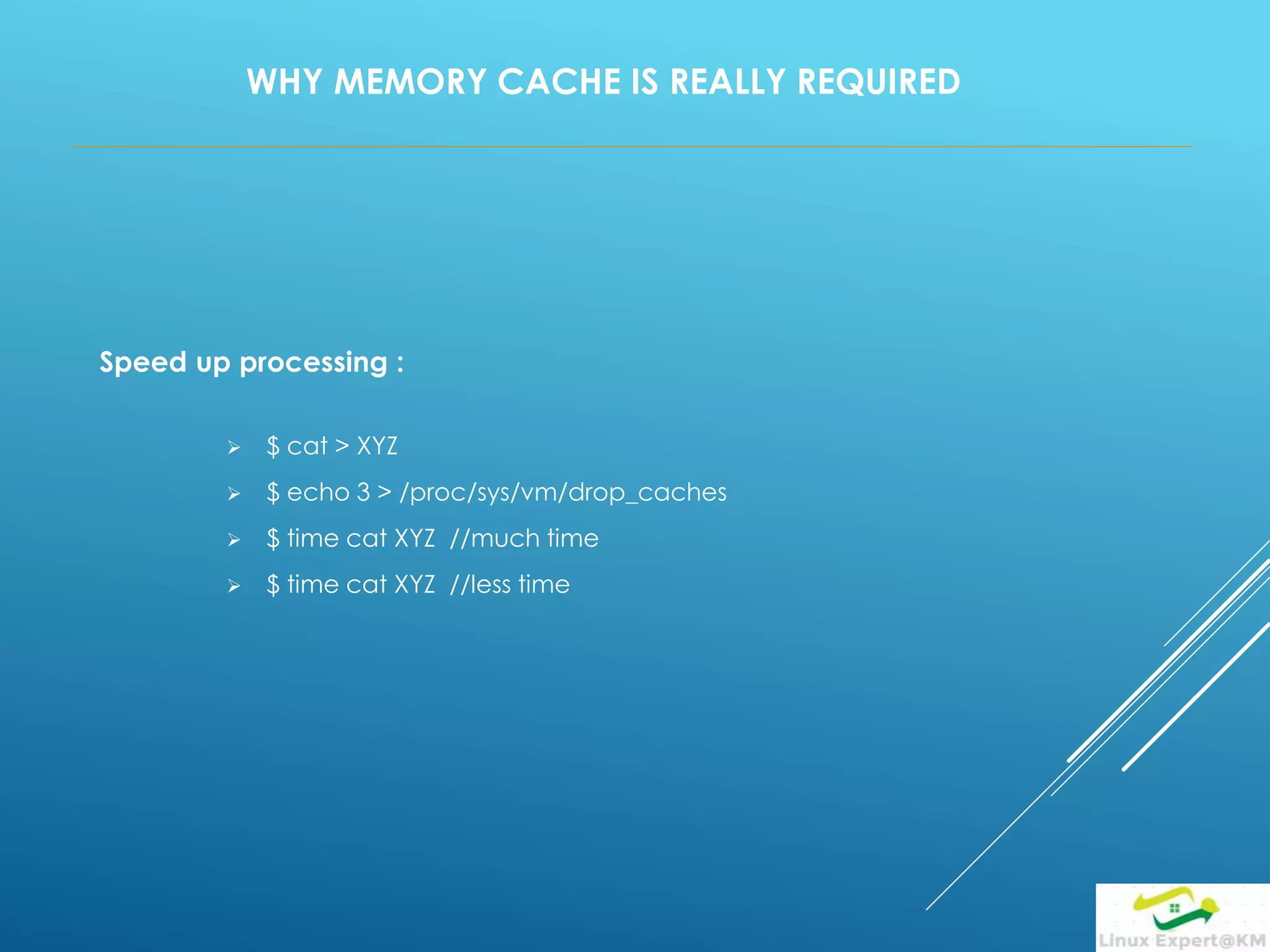
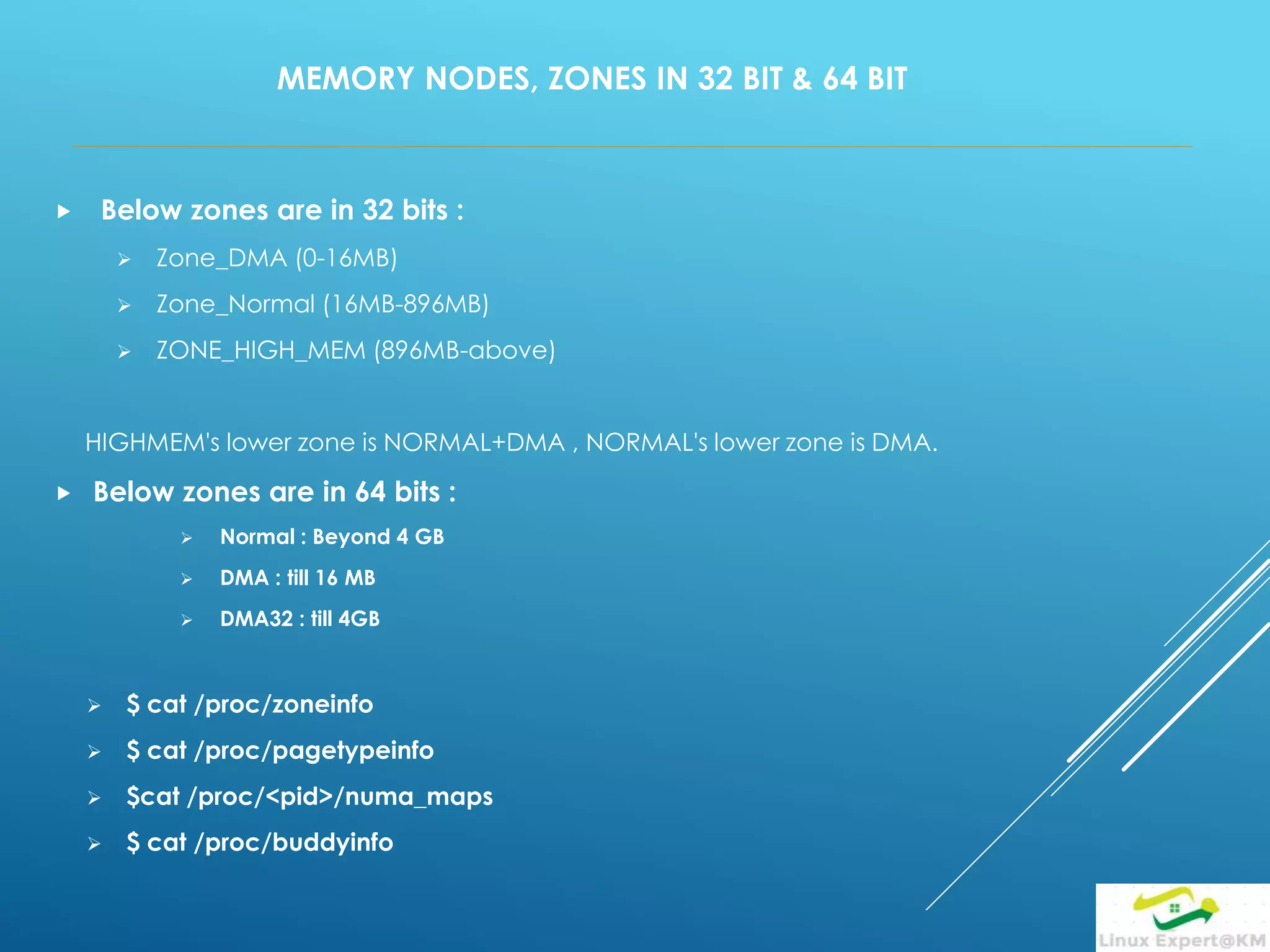
![LOW MEMORY, ZONE_RECLAIM
"lowmem" often means NORMAL+DMA
“lowmem” is not present in RHEL 6, 64bit
Reservation is controlled by : lowmem_reserve_ratio [DMA NORMAL HIGMEM]
cat /proc/sys/vm/lowmem_reserve_ratio
256 256 32 // (1/256)*100 % = 0.39% of nearset zone is reserved
zone_reclaim_mode: How more or less aggressive approaches to reclaim
memory when a zone runs out of memory
1 = Zone reclaim on
2 = Zone reclaim writes dirty pages out
4 = Zone reclaim swaps pages](https://image.slidesharecdn.com/linux-memory-management-kamal-150804185545-lva1-app6891/75/Linux-memory-management-kamal-23-2048.jpg)
![NON-UNIFORM MEMORY ACCESS(NUMA)
Numa concept :
Numa Placement – placement of processor & Memory, manual – application,
MPI(Message Passing Interface)
Place application in correct node
Two memory policy – Node Local[after linux boot], Interleave [during kernel boot]
cat /proc/<pid>/numa_maps
numactl -s //show policy
numactl –hardware
numactl [ --interleave nodes ] [ --preferred node ] [ --membind nodes ] [ --cpunodebind nodes ] [ --physcpubind cpus ] [ --
localalloc ] [--] command {arguments ...}
Ref : http://www.redhat.com/summit/2012/pdf/2012-DevDay-Lab-NUMA-Hacker.pdf](https://image.slidesharecdn.com/linux-memory-management-kamal-150804185545-lva1-app6891/75/Linux-memory-management-kamal-24-2048.jpg)
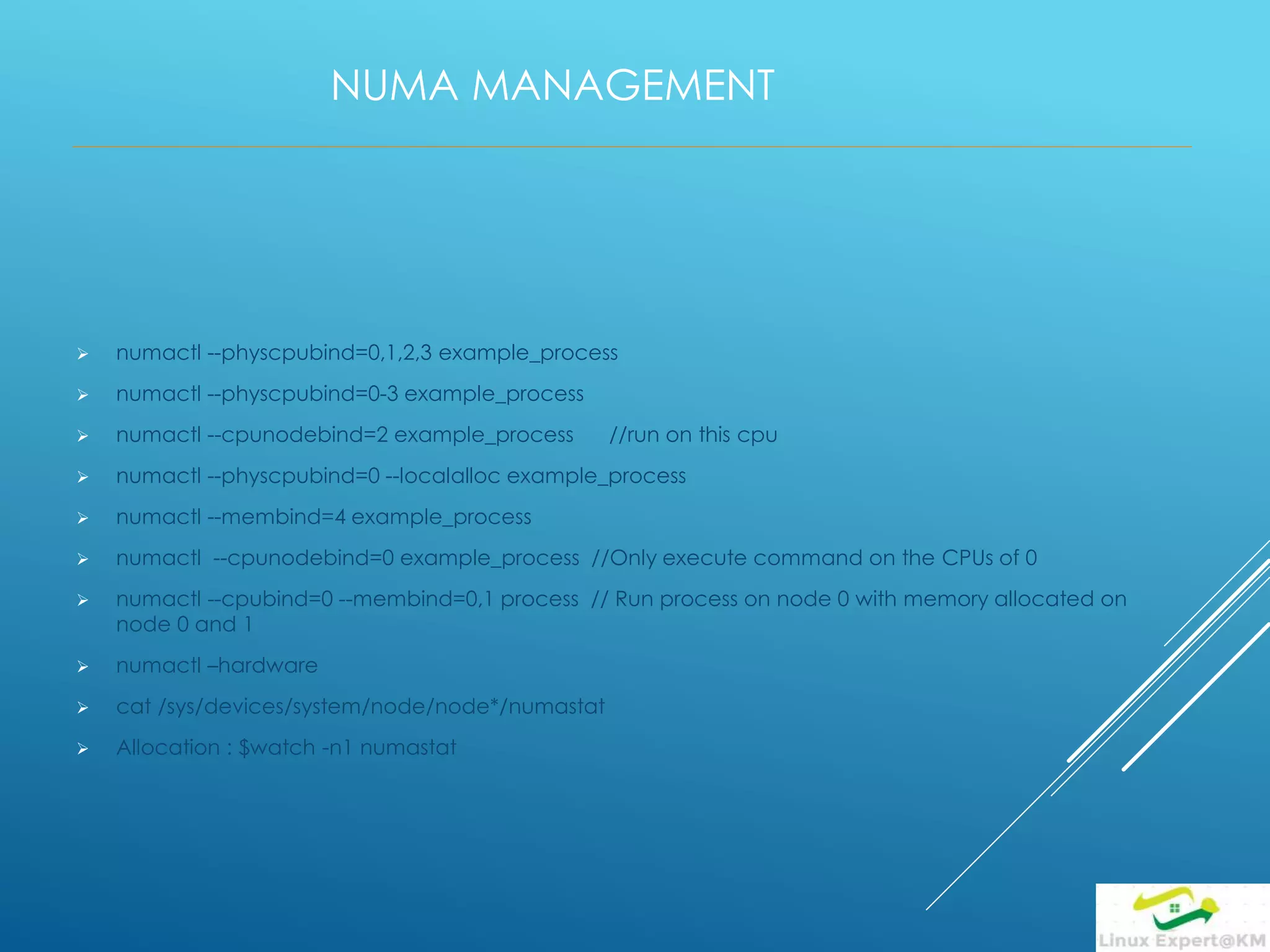

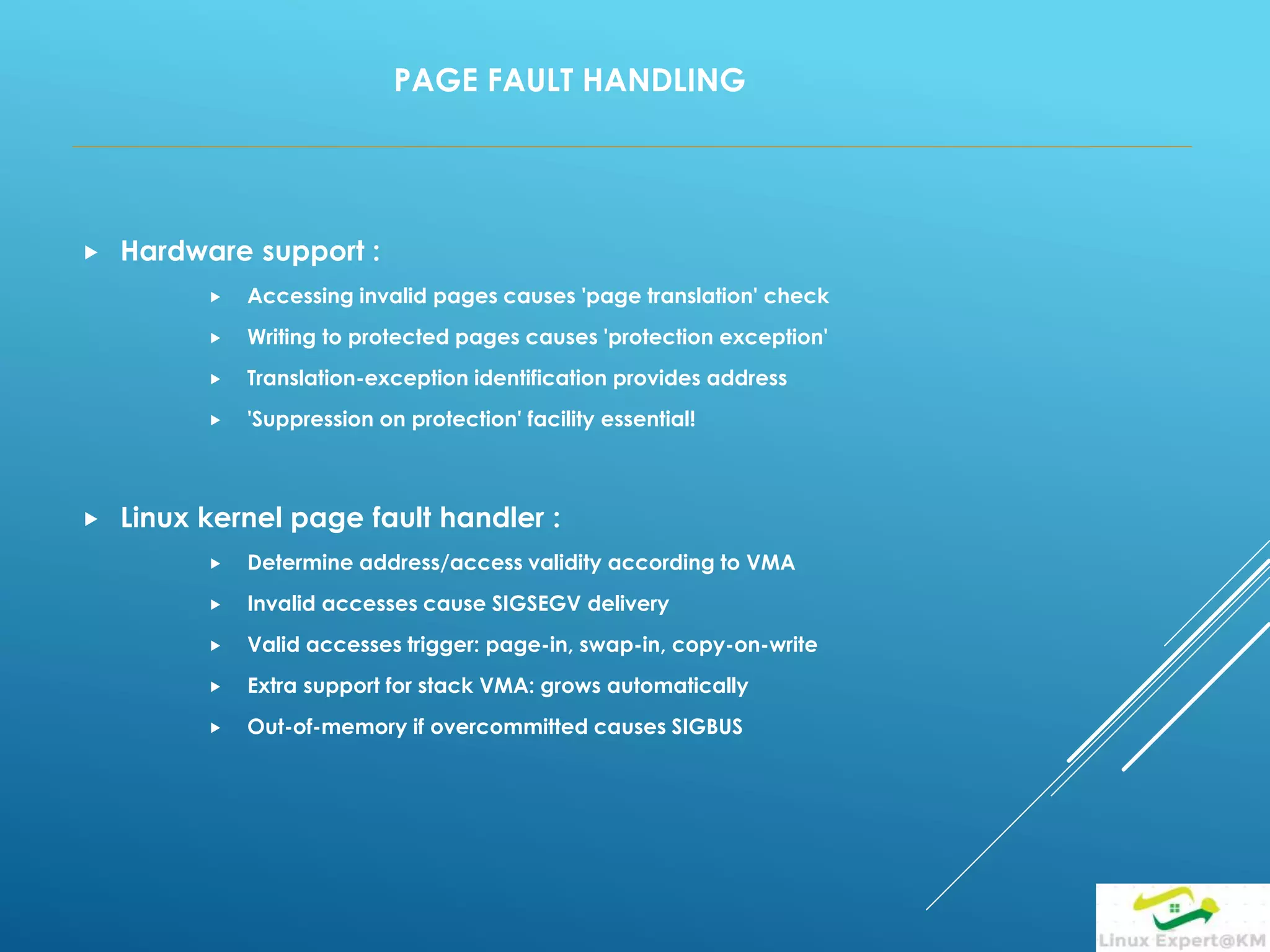
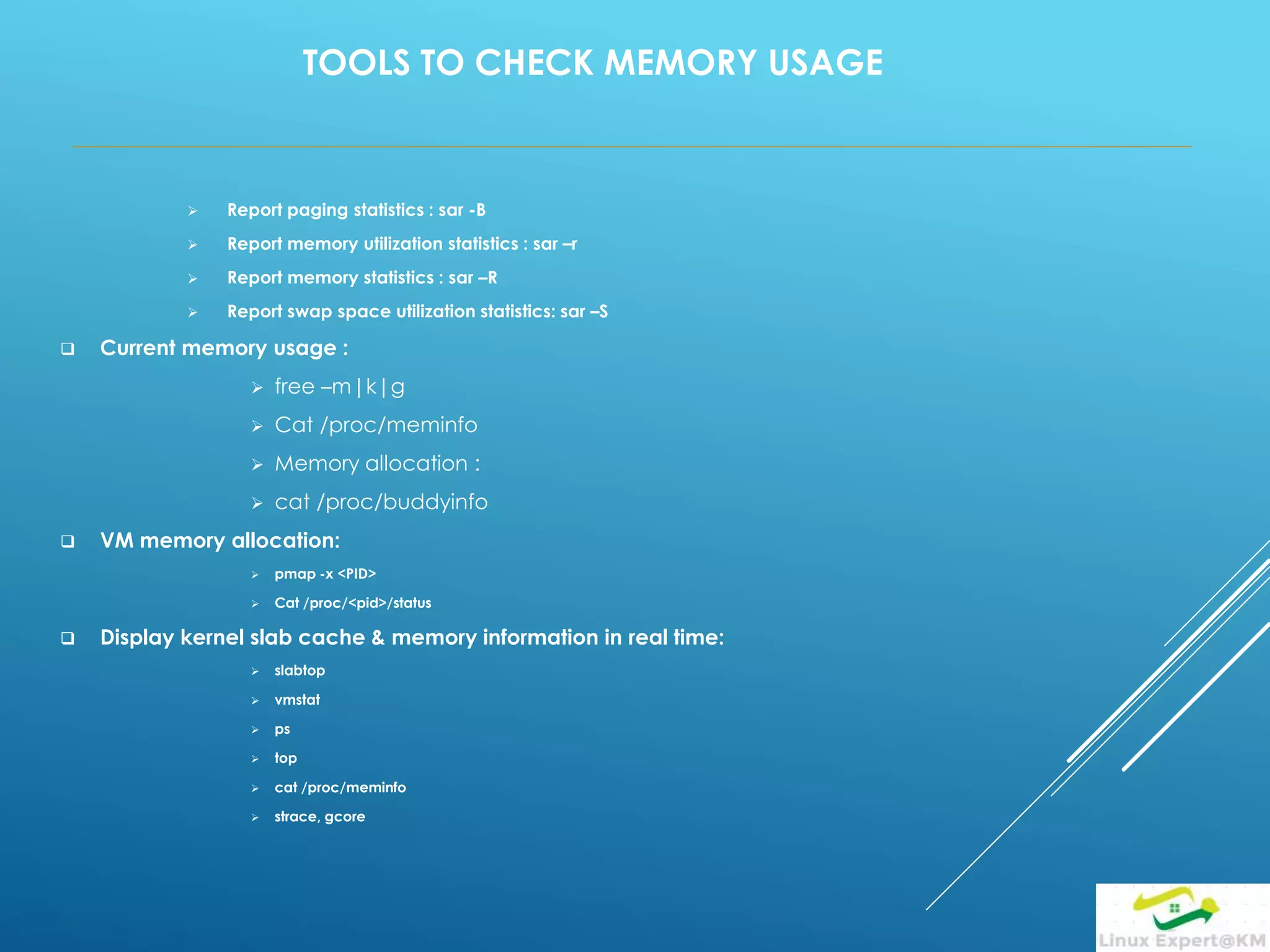

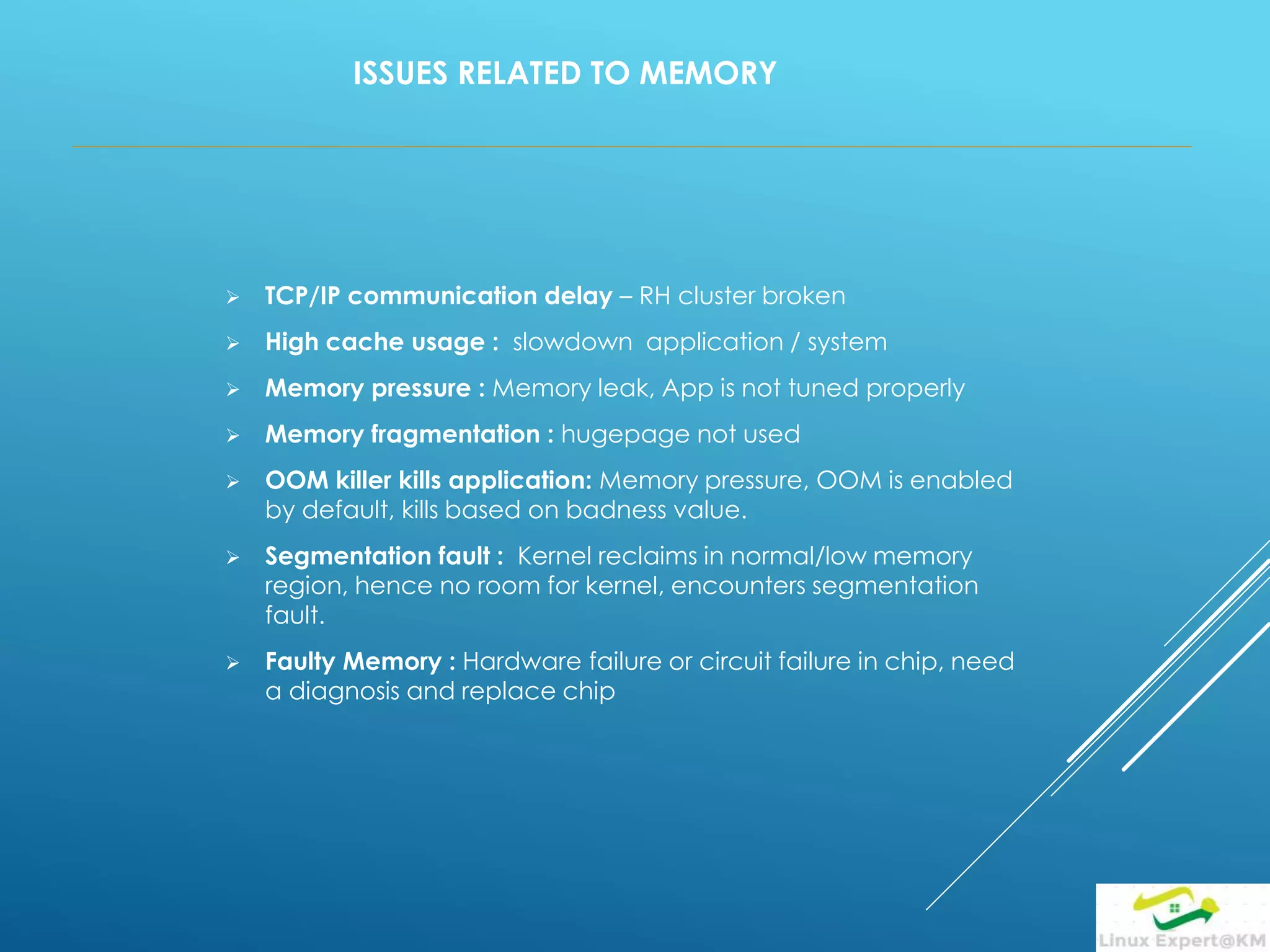

![TROUBLESHOOTING
OOM messages investigation :
Messages :
Oct 25 07:28:34 nldedip4k031 kernel: [87976.461588] [] oom_kill_process+0x5c/0x80
Oct 25 07:28:34 nldedip4k031 kernel: [87976.461591] [] out_of_memory+0xc5/0x1c0
Oct 25 07:28:34 nldedip4k031 kernel: [87976.461595] [] __alloc_pages_nodemask+0x72c/0x740
Oct 25 07:28:34 nldedip4k031 kernel: [87976.461599] [] __get_free_pages+0x1c/0x30
Oct 25 07:28:34 nldedip4k031 kernel: [87976.461602] [] get_zeroed_page+0x12/0x20
Oct 25 07:28:34 nldedip4k031 kernel: [87976.461606] [] fill_read_buffer.isra.8+0xaa/0xd0
Oct 25 07:28:34 nldedip4k031 kernel: [87976.461609] [] sysfs_read_file+0x7d/0x90
Oct 25 07:28:34 nldedip4k031 kernel: [87976.461613] [] vfs_read+0x8c/0x160
Oct 25 07:28:34 nldedip4k031 kernel: [87976.461616] [] ? fill_read_buffer.isra.8+0xd0/0xd0
Oct 25 07:28:34 nldedip4k031 kernel: [87976.461619] [] sys_read+0x3d/0x70
Oct 25 07:28:34 nldedip4k031 kernel: [87976.461624] [] sysenter_do_call+0x12/0x28](https://image.slidesharecdn.com/linux-memory-management-kamal-150804185545-lva1-app6891/75/Linux-memory-management-kamal-32-2048.jpg)
